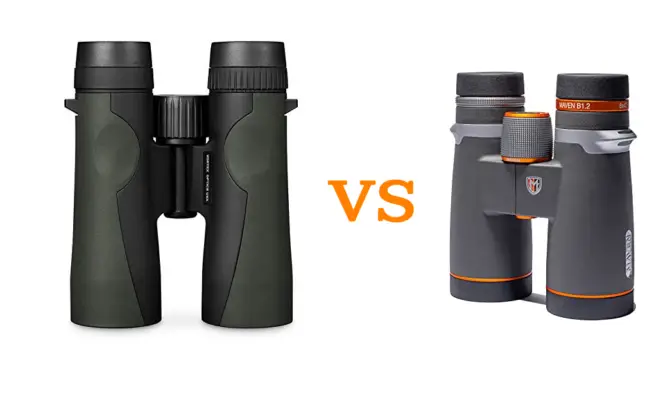Everyone wants to save a coin or two whenever they are purchasing anything, including binoculars. Well, choosing a cheap binocular is not always a great idea as it can end up costing you much more than you would have used with an expensive one in the first place. In this post, I want to outline the common difference between cheap and expensive binoculars to help you make a decision on which is suitable for your needs.
Cheap, as they say, is expensive and this is especially true with optics. It is almost certain that very cheap binoculars have less quality and performance compared o more expensive ones. From the materials used to the features, cheap binoculars might not be worth taking a risk on.
Let us compare binoculars from both sides; very cheap and expensive.
Cheap Binoculars
Materials
As expected, very cheap binoculars will have the least input in production. Manufacturers will use low-cost and cheap materials when making these binoculars to keep the prices down. For example, very cheap binoculars are made with a plastic chassis and have many plastic body parts and components compared to expensive ones. The focus wheel, the eye-cups, and the eyepiece housings might all be made of plastic hence more delicate and likely to break on small shock.
O-ring sealing
While some of them may be advertised as weatherproof, the cheapest binoculars are usually not fully-sealed and thus not waterproof nor fog proof. The seals help to keep out elements and particles such as dust from getting into the binoculars. Without the sealing, your binoculars are likely to have moisture and other elements in the interior lowering the quality of images you get.
Optical Glass & Coatings
Low-cost binoculars are made with lenses and prisms that are of lesser quality. The material used has a higher bubble count and more imperfections compared to that of the more expensive optical glass used on expensive binoculars. The very cheap binoculars also have very few unique coatings used on higher-end instruments.
These coatings are important in improving the view by increasing light transmission and decreasing distortions. The quality of images in cheap binoculars will be lesser than in the expensive ones.
Image Quality
Having the combination of the lower quality glass and fewer optical coatings, very cheap binoculars will have images that are less sharp, less bright, and will have blurry colors that can seem washed out. The area around the edges of the view is often not so clear and the binoculars will have more color fringing around the edges of objects in the view.
Expensive Binoculars
Materials
Higher spec, more expensive binoculars are made to much higher standards. They are made by more highly skilled technicians, with the latest technologies and using the best quality materials and components. Expensive binoculars are more likely to produce a much better user experience with magnesium chassis and all-metal components.
The binoculars are robust and have better-working focusing and twist-up eyepiece mechanisms among other features.
They are much easier to operate and thus more precise.
Optical Glass & Coatings
High-end, expensive binoculars will be made of glass that is of better quality and with fewer imperfections. The glass in these binoculars is polished to a much better level for more light transmittance and clarity.
Image quality
There are more coatings on the lenses and the prisms which increase light transmission for reduced aberrations and distortions.
Accessories comparison
This makes a huge difference between the expensive and very cheap binoculars. The quality of the different accessories included varies depending on the price. This includes the packaging, the carry case, neck strap, lens covers, rain guard, cleaning cloth, and harness.
For things like lens covers, cheap binoculars will either lack them or they will have the lens covers unmarked. The lens covers will be made of weak plastic materials which are likely to break after a short time of use.
On the other hand, high-end binoculars have accessories that are designed specifically for the particular brand and the specific configuration. They have a logo of the brand and are less likely to come off or break by accident.
Conclusion
Both expensive and cheap binoculars will serve their purpose, depending on the intended use and the user’s budget. However, their differences will be felt in quality, performance, and durability.
The very cheap binoculars are more likely to produce low-quality images and even break down after a short time of use. They will end up costing you much more as you will be frequently going to the store for a new pair of binoculars.



